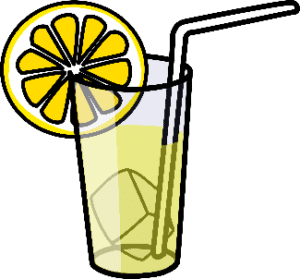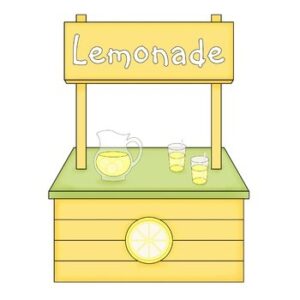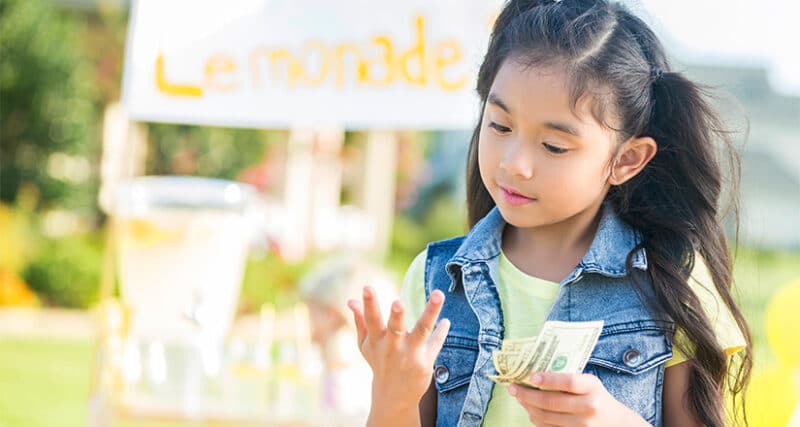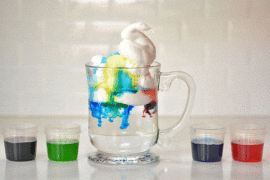Lemonade Entrepreneurs: A Lesson for Financial Literacy
A recent push from the New Jersey Department of Education is the requirement of school districts to teach financial literacy. Lessons must include saving, credit, debt, insurance, investment, and other issues associated with personal finance.
There is always a certain level of uncertainty and anxiety on the part of the teacher when faced with something new to teach. It is definitely a different kind of math class than we might be used to teaching and it may be met with resistance from the students who are already taking a mathematics class.
So, what do teachers do in this type of situation? Well, we can start by embracing the positives that can come from teaching and learning about finance and consumer math. This is the course we always needed in school but was never taught. It takes some people a lifetime to figure out how to manage their money, balance their budgets, and become smart consumers. Now, we help the upcoming generations to get ahead of the curve by teaching them about all the trials and tribulations we went through so they can avoid some of the same mistakes.
A great way to assist with student buy-in is to show them how financial literacy is a real-world issue and how it affects them, as well as how they can play an active role in their own education.
As it so happens, Governor Murphy recently passed a law making it legal to open a lemonade stand in New Jersey. Below is a lesson plan that explores that venture in a way that teaches some fundamentals of financial literacy.
In this project, students will take the role of lemonade stand entrepreneurs. The class will be divided into teams and then each team will further be subdivided into job descriptions. This is a great opportunity for teachers to differentiate their instruction among the group based on their varying skills and abilities.
The first job description is the “Pricing” group. Here, the teacher will want to enlist their stronger math students. Their task is to create an inventory list of supplies their team will need to complete the task. Materials and costs can be readily found on a site like Amazon. A sample pricing sheet is included at the end of this article. Once the materials are listed, it is the job of the Pricing group to calculate the unit cost: what it takes to produce one cup of lemonade. They are also responsible for estimating the cost of opening the stand. This would include the cost of advertising materials and lemonade mixing and dispensing equipment.
The second job is that of the “Marketers.” This is a great task for the artistic students in the class. This subgroup will set the price based on the information gathered from the “Pricing” group, design an attractive billboard, give their beverage a catchy name, and decorate the stand. To make the lesson a little more multi-cultural, teachers can have students research various countries to see what lemonade stands might look like there. Lemon may not necessarily be a common flavor in these counties. Have students check which fruit(s) are popular in these areas and base their design on this. As the teacher, you might even want to have the students use the language of that country in the design of the billboard. Google translate can help with this.
The third group consists of the flavor “Mixers.” This is a task for the more hands-on learners. Based on the information from the “Pricing” and “Marketing” groups, the “Mixers” combine the ingredients in proportion and prepare the mixture to be dispensed and served.
There are many moving parts to this project. As a result, the teacher must ensure that the different subgroups communicate with each other. The teacher may want to enlist two “Assistant Managers” who have an overall knowledge of what each group must accomplish and be able to help them communicate with each other.
Please see activity sheets below.
Lemonade Stand: Pricing
|
Expense Sheet |
Cost per unit | |
|
Items Ordered |
Price |
|
| 1 of: Country Time Lemonade Naturally Flavored Powdered Drink Mix (19 oz Canister) | $2.82 | |
| 1 of: Country Time Lemonade Naturally Flavored Powdered Drink Mix (19 oz Canister) | $2.82 | |
| 1 of: Country Time Pink Lemonade Naturally Flavored Powdered Drink Mix (19 oz Canister) | $3.69 | |
| 1 of: 16 Ounce Paper Lemonade Cup with Lids and Plastic Straws – Set of 50 | $24.98 | |
| 1 of: Stainless Steel Coffee Beverage Stirrers Stir Cocktail Drink Swizzle Stick with Small Rectangular Paddles (5 silver) | $5.99 | |
| 1 of: True Lemon Assorted Beverage & Lemonade Drink Mixes 10 Ct 1.06oz (Pack of 5) | $13.96 | |
| 1 of: CreativeWare 2 Units 1.5 gallon Stacking Beverage Dispenser, Clear Sold by: Amazon.com Services LLC |
$22.69 | |
| 1 of: Pack Presentation Board, White, Single Wall, 48″ x 36″, (4 Boards) | $19.98 |
|
Supply Expenses – First, take the total amount spent on supplies and divide that by the cost to produce one unit of lemonade. (That is your break-even point)
Now calculate different pricing models. For example, if you hope to sell 100 cups of lemonade at .50 cents per cup, how much would you earn in profit? What about .75 cents? Or $1.00?

Profit at 100 cups sold for .50 ______
Profit at 100 cups sold for .75 ______
Profit at 100 cups sold for 1.00 ______
Brainstorm other ways to ensure more sales are made.
Worksheet: Lemonade Stand Marketing
What do you think is a fair price to set for your product? ________
How could increasing the price affect sales? ____________
How could increasing price affect profits? _____________
How could decreasing the price affect sales? ___________
How could decreasing the price affect profits? ____________
What other variables could affect sales?
______________________________________________________________________________
Design your stand and billboard. 
Worksheet: Lemonade Stand Mixologists
If you are planning to use 10 cups of water, how many cups of concentrate would you need for each recipe? Use multiple strategies to solve this problem and explain the strategies you used.
What is the name of your mix ? (Be creative and share it with the marketing team)
Please record the recipe below
|
Flavor(s) used |
Quantities (ounces) |
Water (ounces) |






